purple rice.
Purple Rice and More: Five Best Unique Grains from Japan!
James Lau
Posted on December 12, 2023
Share:
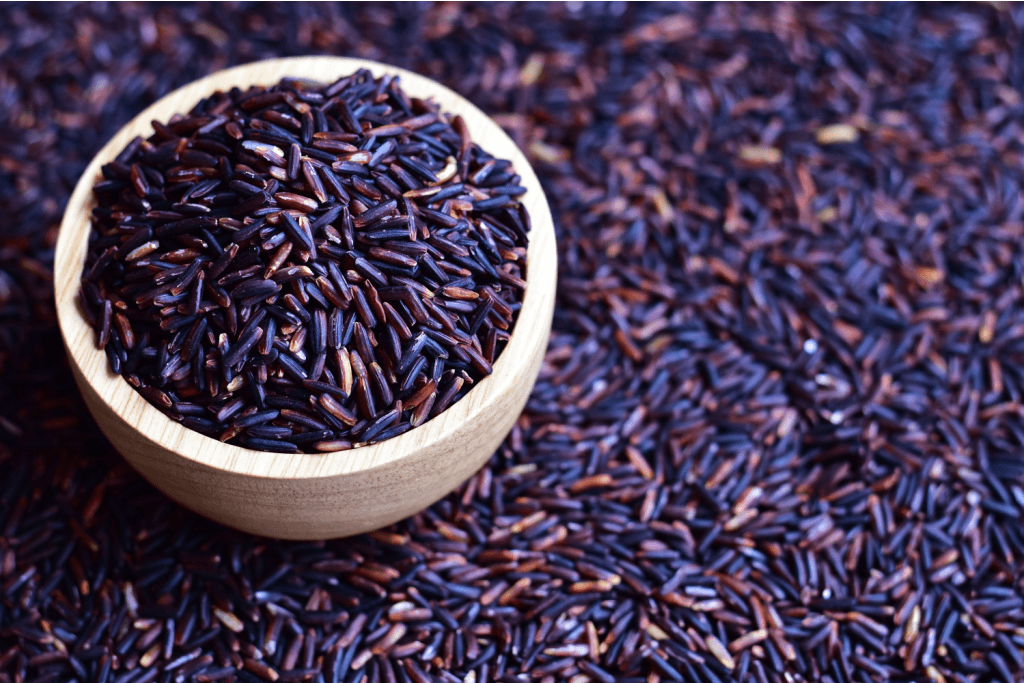
Have you ever heard of purple rice? In Japanese cuisine, there’s more than just simple white rice! With various unique flavors, health benefits, and signature foods, a whole world of rice is waiting to be discovered! From the ancient purple rice to the sticky mochigome, let’s discover what rice Japan has for you!
Purple Rice
Purple rice is one of the oldest varieties, full of nutrients, with eight times the fiber of brown rice. Its distinctive feature is its nearly-black color, which changes into purple when polished. The color is thanks to anthocyanin, which is well-known for its health benefits. Along with its high mineral content, purple rice is a source of various nutrients and is common in traditional medicinal cuisine.
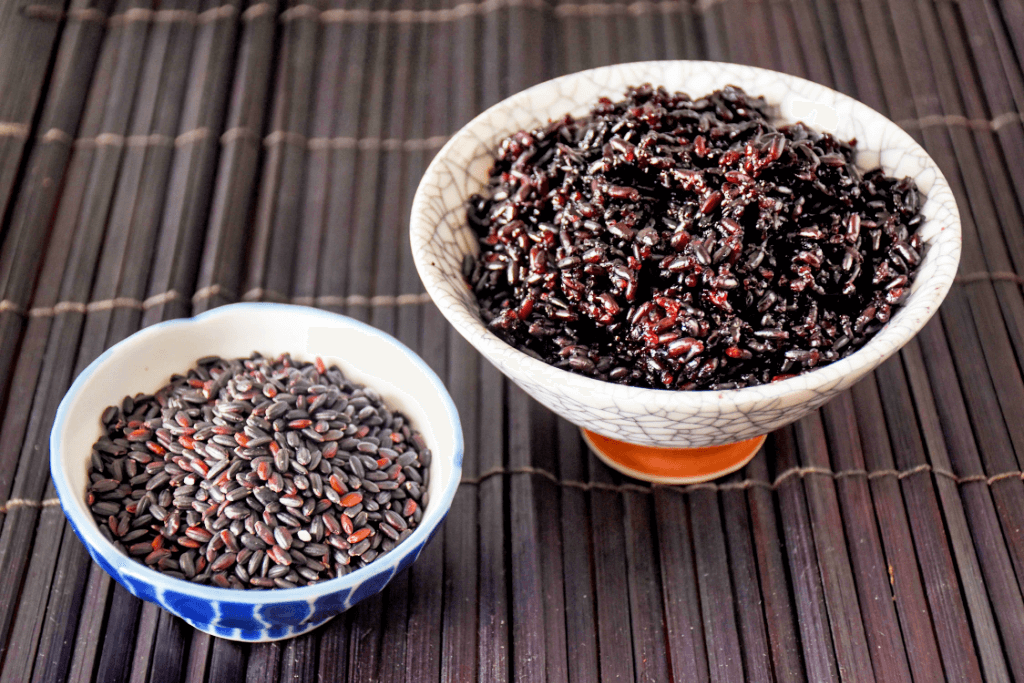
Moreover, purple rice is suitable for pregnant mothers. It is famous for its nutrients and benefits for skin and blood health. It’s also stress-relieving and contains high levels of iron and calcium. Mixing it with white rice makes the purple color pop and stimulates the appetite. With its unique aroma and health benefits, purple rice can be easily used in various dishes.
Brown Rice
Brown rice, or genmai, is famous for its short, plump, and oval grains. It’s the unpolished counterpart to Japanese white rice, retaining the outer layers and providing enhanced nutritional benefits. Compared to other rice varieties, Japanese rice, including brown rice, has more water, making it tender and moist. While brown rice is less sticky than its white counterpart, its nutty flavor and rougher texture may make it less attractive for small children and the elderly.
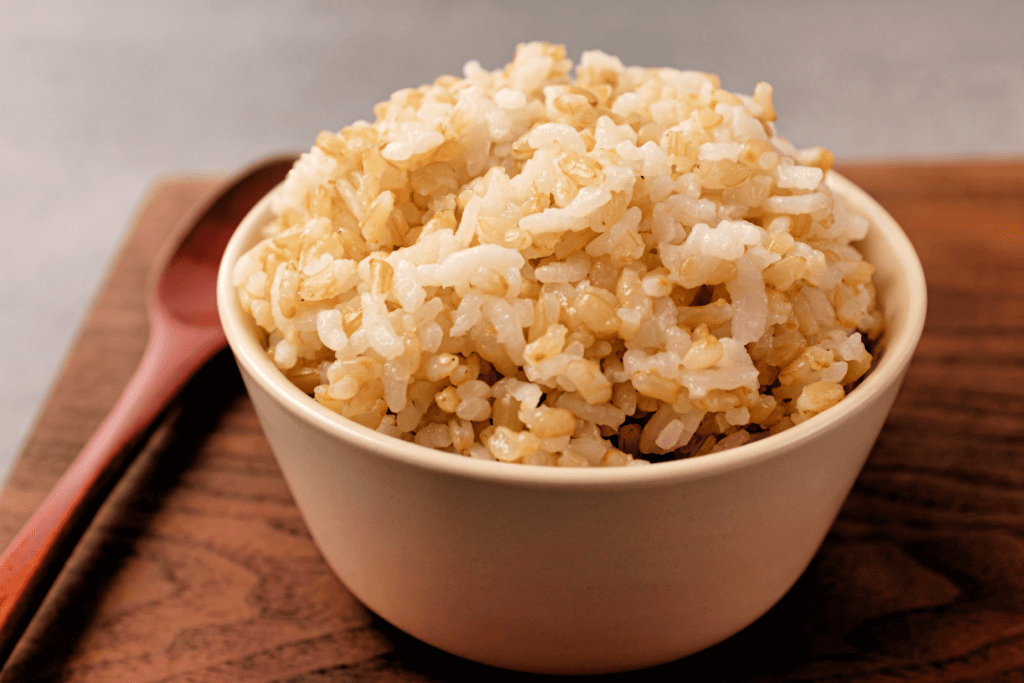
Because it’s rich in fiber, vitamins, and minerals, brown rice is healthier than white rice. Soaking it longer and cooking it with extra water can improve its texture. Additionally, many gradually mix white and brown rice in dishes like donburi, curry, and fried rice for a healthier option. Although less common in Japanese restaurants, brown rice finds a place in home cooking as a healthier alternative to white rice.
GABA Rice
Hatsuga genmai, or germinated brown rice, is a variant of unpolished brown rice that undergoes germination. This enhances flavor and elevates nutrient levels, particularly gamma-aminobutyric acid or GABA. This process gives it a softer texture and a nuttier taste than regular brown rice, making it an excellent in-between for those trying to change from white to brown rice. GABA rice is also a healthy food because of its anti-diabetic properties.
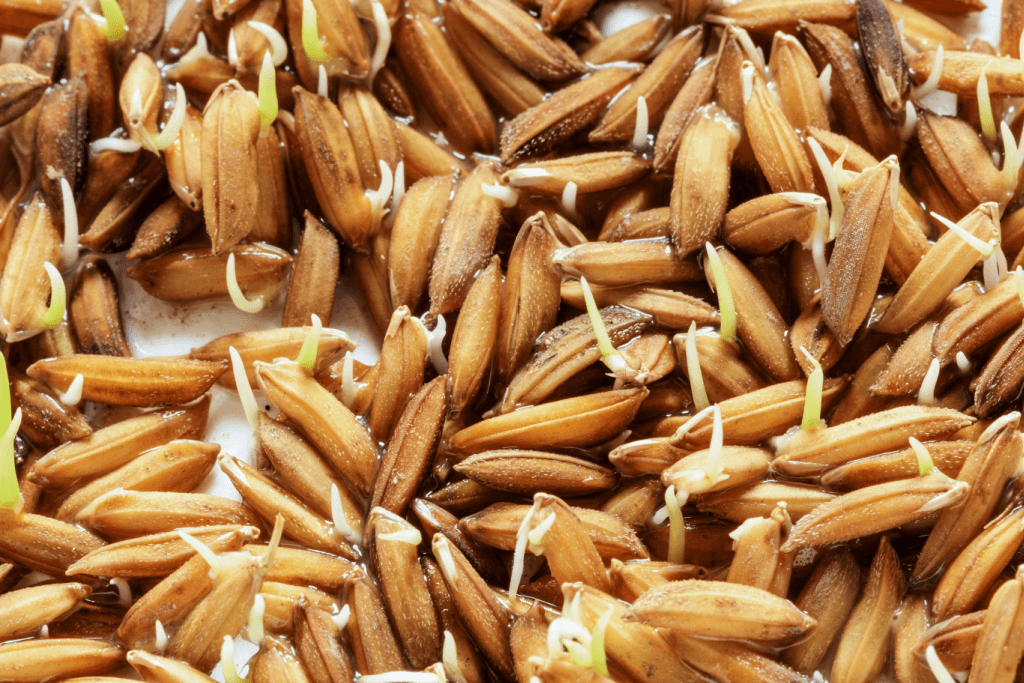
The journey begins with brown rice to create GABA rice, as the germination process needs the hull. After rinsing, the brown rice is soaked in warm water, encouraging germination and increasing nutrient content. As the rice germinates, the GABA levels increase, and the rice absorbs water naturally, resulting in faster cooking times and less cooking liquid than other rice varieties.
Are you interested in some amazing snacks like rice crackers and mochi? Check out Sakuraco! Sakuraco delivers traditional Japanese snacks, teas, and sweets from local Japanese makers directly to your door so you can enjoy the latest treats directly from Japan!
Kokumotsu Gohan
Kokumotsu gohan is not a specific rice variety but a mix of brown rice, red rice, black rice, pressed wheat, millet, black barley, and more. Beyond its nutty and sweet flavor profile, kokumotsu gohan has many health benefits. Packed with fiber, vitamins, and minerals, this blend promotes healthy digestion, regulates blood sugar, and gives people energy to last the day. Kokumotsu gohan is also a beauty secret and supports skin health.
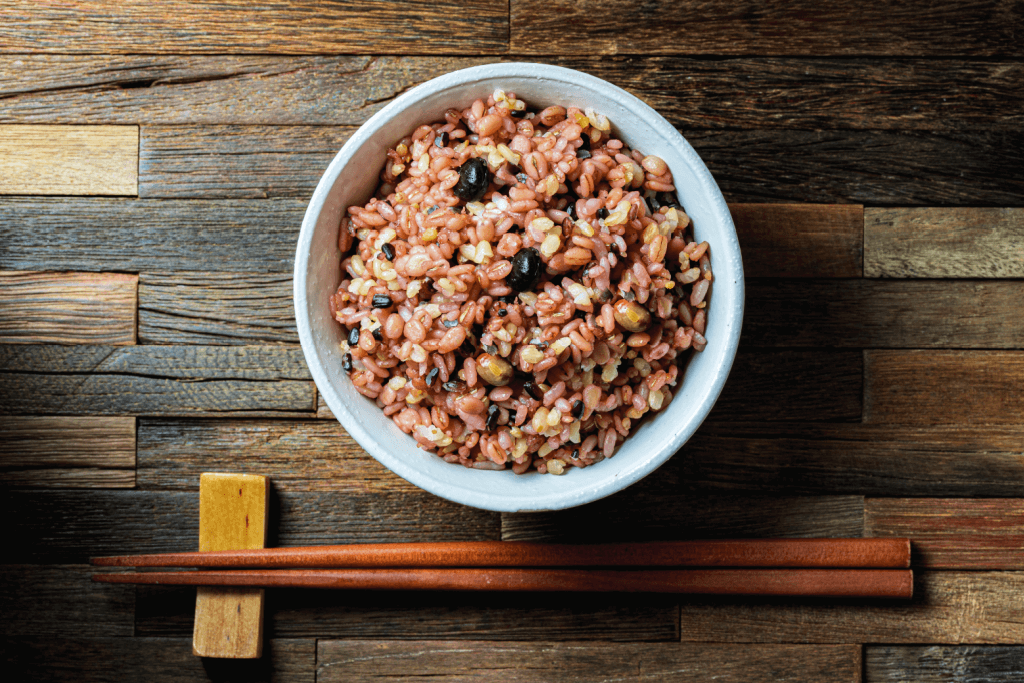
Not to mention, kokumotsu gohan’s usefulness makes it a staple in Japanese meals. Whether enjoyed as a breakfast porridge, a comforting lunch dish like ochazuke, or a nutritious dinner with furikake multigrain rice and tsukemono (Japanese pickles), this multigrain blend changes your dining experience. Not only does kokumotsu gohan make meals healthier, but it also improves overall health.
Mochigome
Mochigome, also known as sweet rice, glutinous rice, or mochi rice, is a distinct short-grain rice in Japan with a slightly sweet flavor and more starch content, making it stickier than usual rice varieties. Unlike typical Japanese rice, mochigome is steamed rather than boiled. It’s often seen in the pounding of the cooked rice to create the traditional sticky paste known as mochi. This process occurs during New Year celebrations with a large wooden mortar and mallet.
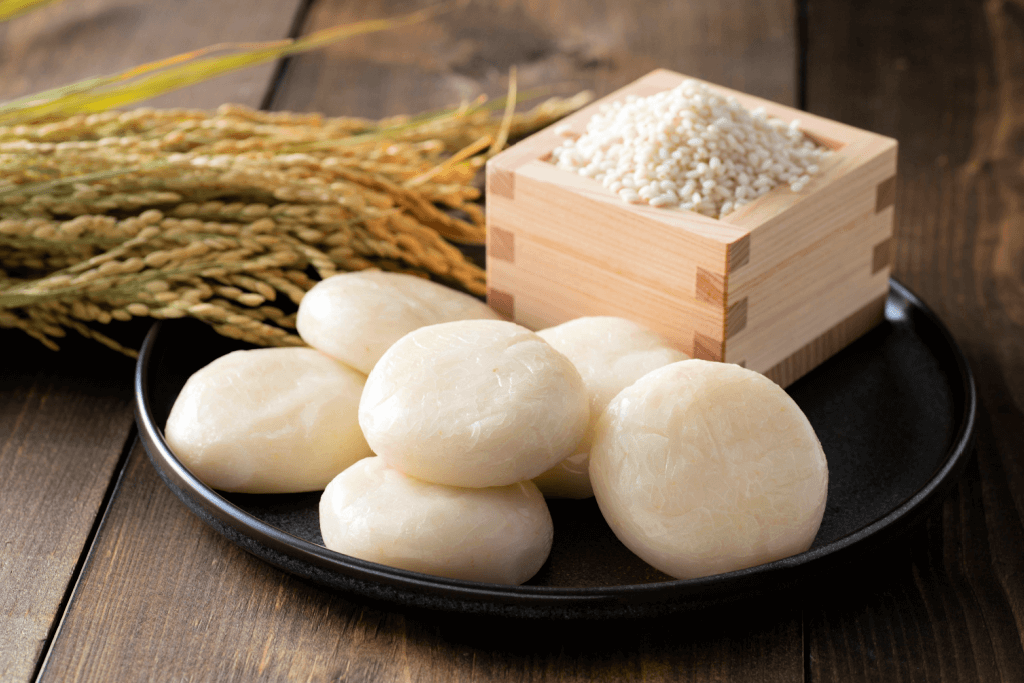
Harvested between late August and early October, freshly harvested mochigome has a more robust aroma and chewiness, maintaining its sticky texture even when cooled. Known for its slightly sweet taste, mochigome is a useful ingredient in sweet and savory dishes. It’s a key element in Japanese sweets, including green tea mochi, dango, and shiratama, where mochi flour plays a crucial role.
What makes food like purple rice special?
In Japanese cuisine, rice is not just a staple but a variety of flavors and textures. From purple rice with its antioxidant properties to the nutty chewiness of brown rice, there’s something different in all grains. GABA rice is a softer, nuttier alternative, while kokumotsu gohan blends grains for health benefits, and mochigome, with its sweet and sticky character, is enjoyed as a dessert! Have you ever tried any of these rice varieties? How did you like them? Let us know in the comments below!

Discover authentic flavors with Sakuraco
Get Sakuraco 

Discover authentic flavors with Sakuraco
Get Sakuraco 
Related Articles

Mochi: How is Mochitsuki Made in Japan?
Mochitsuki is the Japanese tradition of pounding steamed rice to make mochi for the New Year. Families and neighbors gather to participate in this lively and meaningful tradition. The teamwork involved helps everyone feel a sense of connection.

Konpeito Candy: What Makes This Starry Treat Shine?
If you are a fan of the famous Demon Slayer series, then you probably know that the favorite treat of the adorable Nezuko Kamado is those tiny, colorful little sweets.

Kinako: The Amazing Roasted Soybean Powder!
Kinako is a very popular ingredient that can easily be found in many traditional Japanese sweets. It has a distinctive flavor, standing alongside other classic tastes such as red bean or sesame. Let’s explore this charming ingredient together, and who knows, you might even be able to make it in your own beloved kitchen!

Aaron and Claire Make the Ultimate Japanese Pork Belly: Buta no Kakuni
If you want a Japanese dish that’s rich, tender, and simple to follow, Aaron and Claire show exactly how to make it in this episode. Aaron prepares Buta no Kakuni, a classic braised pork belly dish renowned for its rich flavor and tender texture.



